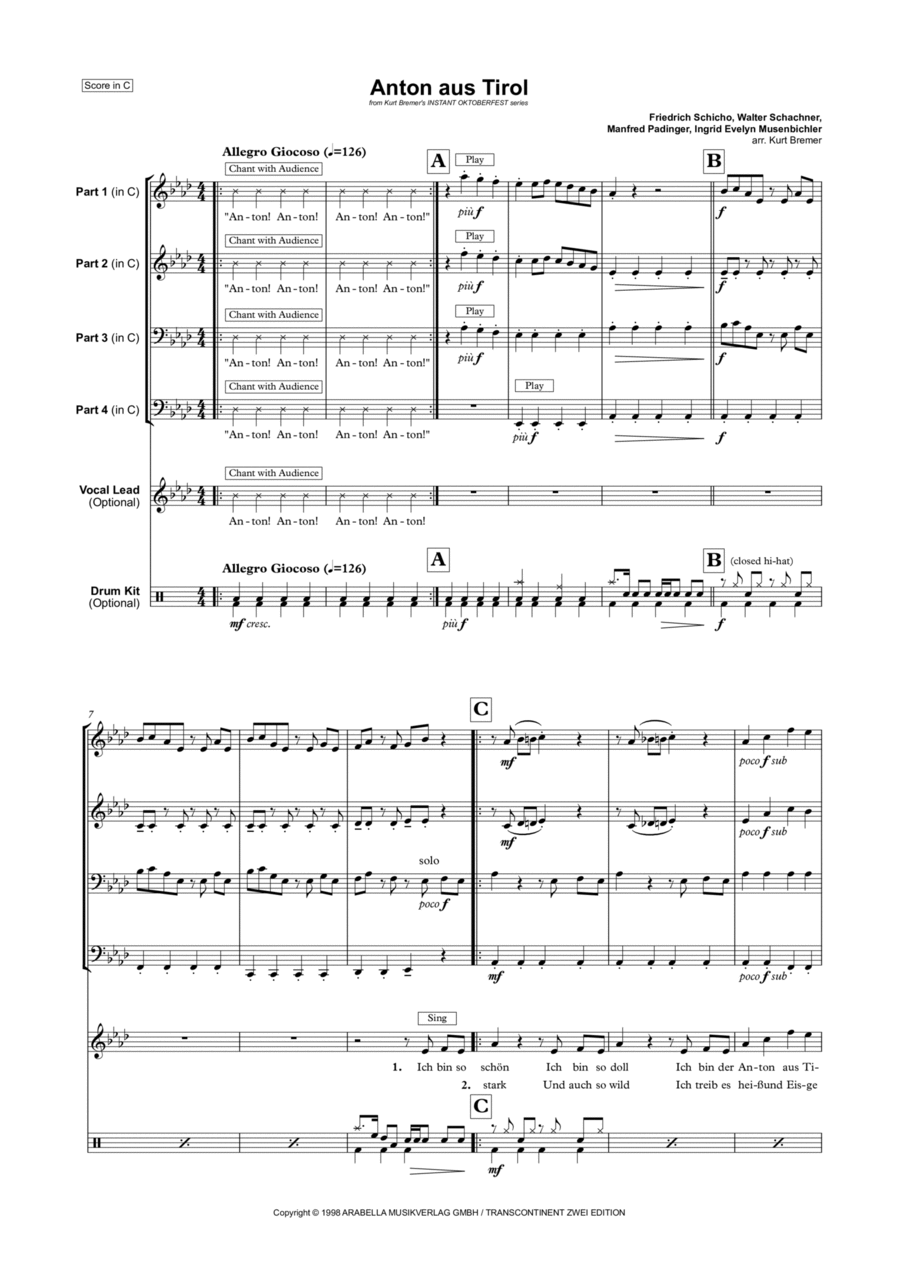Level 3 - Digital Download SKU: A0.1354059 By Dj Oetzi. By Friedrich Schicho, Ingrid Evelyn Musenbichler, Manfred Padinger, and Walter Schachner. Arranged by Kurt Bremer. 20th Century,Comedy,Holiday,Multicultural,Pop,World. 47 pages. Kurt Bremer #938783. Published by Kurt Bremer (A0.1354059). Part of Kurt Bremer's INSTANT OKTOBERFEST series, this arrangement is designed for flexible ensemble (four instrumental voices, vocal lead & drum kit). Your download will include:-Full Score-Part 1 (in C, Bb & Eb)-Part 2 (in C, Bb, Eb & F)-Part 3 (in C, Bb, Eb & F)-Part 4 (in C, Bb & Eb)-Vocal Lead-Drum KitAbout the work:First released in 1999 by the Austrian musicians Anton and DJ Ãtzi, âAnton aus Tirolâ is a Euro Pop mega hit, and has become a firm audience favourite at Oktoberfest celebrations across the world.Following its debut into the charts, the track reached number one in Anton and DJ Ãtzi's homeland, where it stayed for 10 weeks.
